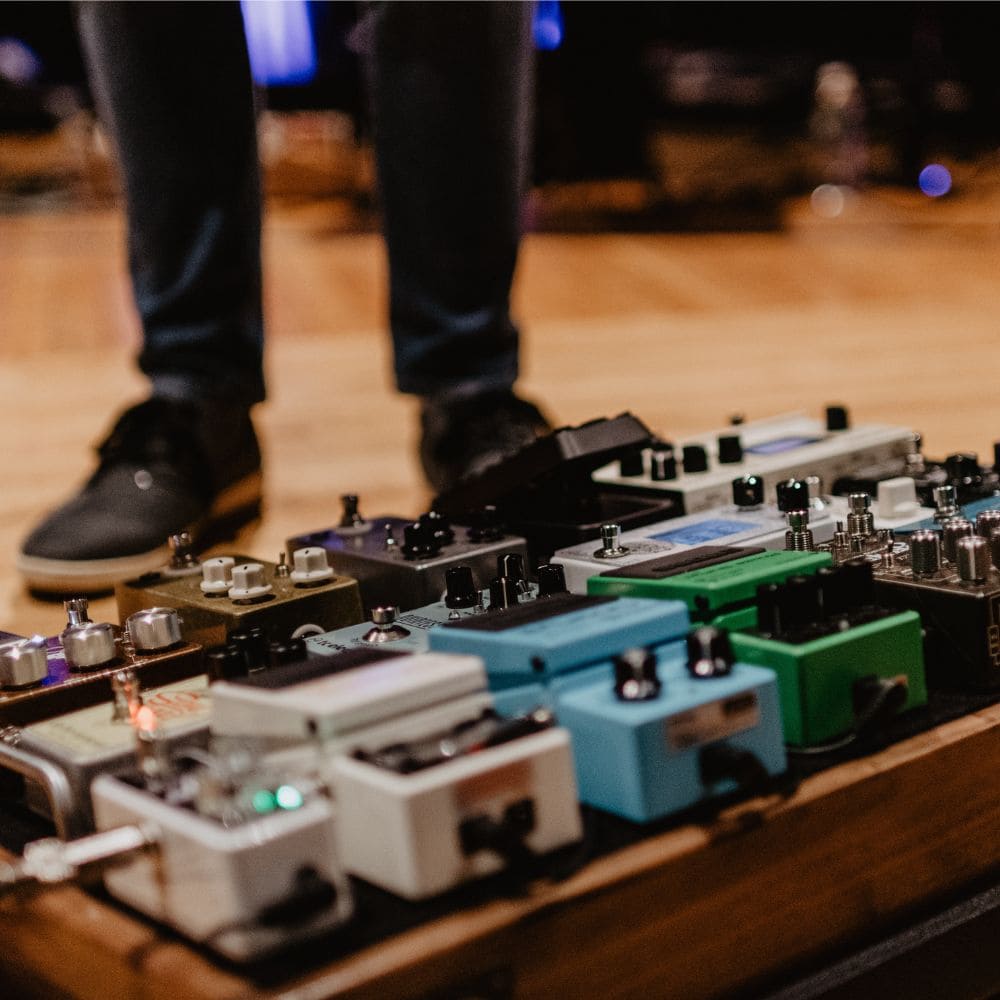Where Should a Buffer Pedal Go?

When it comes to optimizing your guitar's signal chain, the placement of a buffer pedal is a crucial consideration. Understanding where to position this essential piece of gear can significantly impact your overall tone and signal quality.
In this article, we'll delve into the specific placement options for buffer pedals and explore the benefits they offer to guitarists, as well as potential problems to look out for in your setup.
Answering the Question
Before delving into the specifics of buffer pedal placement, let's address the fundamental question at hand: Where should a buffer pedal go? The answer to this inquiry lies in the intricate dynamics of signal chains and guitar setups.
It's essential to consider the impedance, cable length, and the types of effects in your chain to determine the optimal placement for a buffer pedal.
Benefits of Using a Buffer Pedal
- Enhancing Signal Integrity
- Combatting Signal Degradation
- Effect on Tonal Clarity
- Reduction of Signal Loss
- Preservation of High-Frequency Content
Buffer pedals play a pivotal role in maintaining the integrity of your guitar's signal as it travels through various components of your setup. By using a buffer pedal, guitarists can effectively combat signal degradation caused by lengthy cable runs, high-impedance effects, and complex pedalboard configurations.
The benefits of incorporating a buffer pedal into your setup extend to improved tonal clarity, diminished signal loss, and the preservation of high-frequency content.
Are There Any Specific Types of Pedals That Cause Problems?
When it comes to impedance and signal degradation with guitar effects pedals, it's not necessarily a specific type of pedal that causes the most problems, but rather specific characteristics within certain designs. Here's a breakdown:
Input Impedance:
- Fuzz Faces: Classic Fuzz Face circuits have notoriously low input impedance (around 100kOhms), which interacts with your guitar pickups in a way that dampens highs and reduces overall brightness. This can be desirable for the characteristic fuzzy sound, but also contributes to signal loss.
- Vintage Pedals: Many older pedals haven't kept up with modern standards and might have lower input impedances, leading to similar tonal changes and potential high-frequency roll-off.
Output Impedance:
- Passive Pedals: These pedals don't actively amplify the signal and usually have higher output impedance, making them more susceptible to signal loss over long cables. While not necessarily "problematic," it's something to consider for longer pedal chains.
- Mismatched Impedances: While rare, drastically mismatched impedances between pedals or pedals and amp can theoretically cause signal loss or unwanted interactions.
Modern Solutions:
- High-Impedance Pedals: Most modern pedals have high input impedance (often 1MOhm or higher), minimizing their impact on your guitar's tone.
- Active Pedals: These actively amplify the signal, maintaining it over longer cable runs and minimizing overall loss.
- Buffers: Some pedals even include switchable buffers, allowing you to choose between the buffered "wet" sound and the direct, unbuffered "dry" signal.
Ultimately, the best way to avoid impedance and signal degradation issues is to:
- Use high-quality pedals with modern specifications.
- Keep cable runs as short as possible.
- Experiment with different pedal arrangements and buffer settings to find what sounds best to you.
- Remember, sometimes the "tone suck" or interaction with your guitar's tone can be a desirable effect depending on the sound you're going for.
By understanding these principles and experimenting, you can create your ideal guitar signal chain with minimal unwanted effects.
Placement Options for Buffer Pedals
Directly after Guitar
Placing a buffer pedal directly after the guitar is a strategic choice, especially for guitarists with extensive effects chains or prolonged cable runs.
By positioning the buffer pedal at the beginning of the signal chain, it serves as a safeguard against signal degradation caused by high capacitance in lengthy cable setups.
This placement ensures that the signal remains robust and free from the detrimental impact of long cable lengths.
Before Long Cable Runs
Another placement option for buffer pedals involves positioning them just before lengthy cable runs. This placement helps counteract the adverse effects of cable capacitance and high impedance, ensuring that the signal retains its fidelity and tonal characteristics across extended cable lengths.
By strategically placing the buffer pedal before long cable runs, guitarists can effectively mitigate the signal loss associated with prolonged cable setups, resulting in a more articulate and vibrant tone.
When positioning buffer pedals before long cable runs, there are several key considerations to keep in mind:
- Cable Length: The length of the cable plays a significant role in signal degradation. As the cable length increases, so does the potential for signal loss due to capacitance and impedance. Placing a buffer pedal before long cable runs helps maintain the integrity of the signal even over considerable distances.
- Buffer Pedal Characteristics: Not all buffer pedals are created equal. It's essential to choose a buffer pedal with the right impedance and signal buffering capabilities to effectively counteract the adverse effects of lengthy cable runs.
- Tonal Preservation: The use of buffer pedals before long cable runs not only mitigates signal loss but also ensures the preservation of the guitar's tonal characteristics. This is particularly crucial for professional musicians and recording artists who rely on consistent and pristine audio quality.
- Examples of Buffer Pedals: There are various buffer pedals available in the market, each with unique features and functionalities. It's worth exploring different options to find a buffer pedal that best suits specific performance and recording requirements.
In Effects Loop
For guitarists utilizing amplifiers with effects loops, incorporating a buffer pedal within the effects loop can yield substantial benefits.
By placing the buffer pedal in this location, guitarists can prevent signal loss and degradation caused by lengthy cable connections between the amplifier and effects pedals.
This strategic placement ensures that the signal remains robust and unaffected by the impedance variations introduced by the effects loop, resulting in a clearer and more defined tonal output.
- Improved signal integrity and tone preservation
- Prevention of signal loss and degradation
- Resistance to impedance variations
Conclusion
In conclusion, understanding the optimal placement options for buffer pedals is crucial for maintaining the integrity and fidelity of a guitarist's signal chain.
Whether positioned directly after the guitar, before long cable runs, or within effects loops, buffer pedals serve as essential tools for combating signal loss, impedance discrepancies, and tonal degradation.
By strategically incorporating a high-quality buffer pedal into their setups, guitarists can preserve the natural characteristics of their instrument's tone and ensure that their signal remains robust and pristine throughout their performance.
*FYI, when you make a qualifying purchase through one of our links, we might receive a small commission from Amazon or other retailers, at no additional cost to you, which helps us to fund this site. It's a way to find what you're looking for while supporting us in the process!
